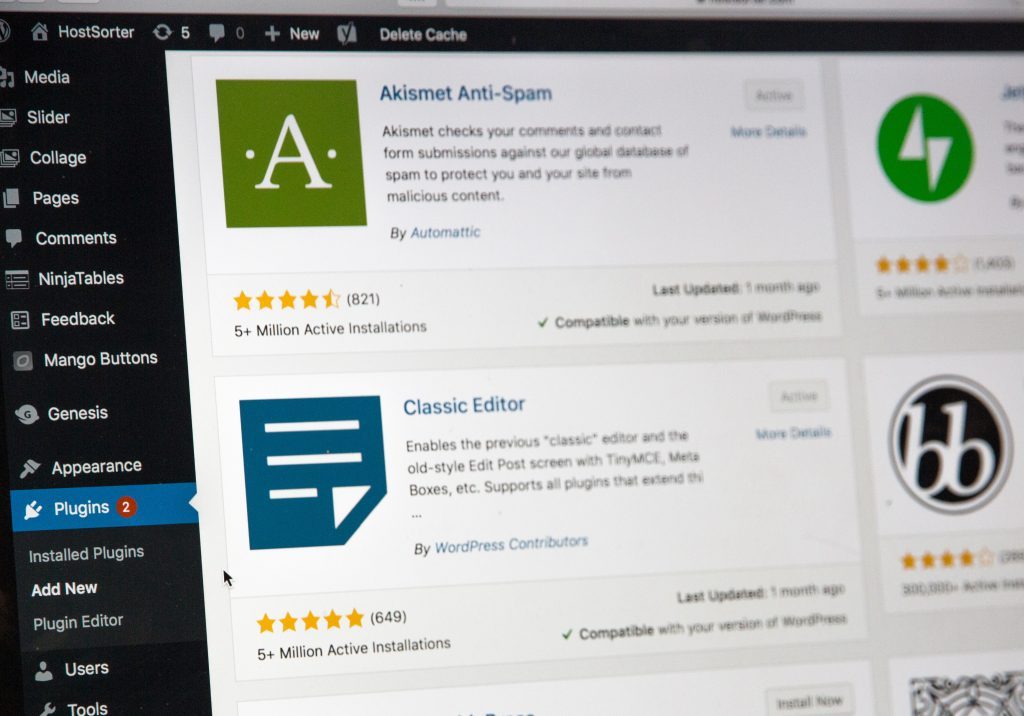Reap The Rewards Of Your SEO With Our How To Guide
Search Engine Optimisation (SEO) is a major part of any online marketing plan these days, as more and more revenue is driven through Google and Bing search. If you’re running an SEO campaign for your website, you’re already halfway to success, but how do you monitor what works, what doesn’t and the benefits? It can sometimes be tricky, being overwhelmend with data, deciding which elements you need to track and which you don’t.
Take a look at some of the area we like to use for SEO campaign monitoring, covering everything from Organic Traffic to Click Through Rates.
Need help with your Search Engine Optimisation? Check out our SEO Services.
Organic Traffic
Organic traffic refers to your website traffic which is generated solely from clicks through from Google and Bing search engine results pages (SERP’s). It doesn’t include other traffic to your site, such as clicks from social media or paid advertsing. Why is it important? Segmenting your organic traffic gives you a clear idea of how well your website is doing in terms of SEO, in short: better SEO= higher organic traffic.
Organic traffic is a good, top level indicator of how your website is performing in terms of SEO, so it should be the first data point in your SEO monitoring. If you want to get a little more indepth, consider refining your data, using landing page for example, which shows how users enter your site (i.e which pages are working well in Google).

Bounce Rates
What is a bounce? Essentially, a user ‘bounces’ from your website if they enter your site and leave, without visiting any other pages. In simple terms, Google assumes your site didn’t provide enough information for a user if they leave straight away. It can get a little confusing though; a very good landing page can (and should) include everything your potential customer needs to know, so there’s no need for them to look anywhere else. The headache here is that a good landing page, which is insightful and helpful can also be one of the highest bounced pages!
Our advice, use Bounce Rates as a soft guide, to highlight any potential issues, but don’t worry too much about the overall figures.
Where Bounce Rates Matter
Any service page, or information page which links to a ‘Contact Us’ or ‘Request A Quote’ page with a high bounce rate is definitely an issue. Why? It means that your page isn’t convincing enough for visitors to click through and go further. Consider refreshing your on page content and improving the offering on any service page with a high bounce rate and you should see conversions increase.
A high bounce blog can also be problematic (not always, but sometimes), as you’re ideally looking to ‘hook’ new users with interesting content and keep them hanging around on your site. The easiest way to lower bounce rates on your blog is to offer similar posts or related stories, which will encourage readers to click through, as oppose to reading one article and leaving.
Organic Conversions
What’s the point in SEO if you’re not building business, growing revenue and customer numbers? Make sure you’re monitoring Organic Conversions as accurately as possible. Google Tag Manager can help monitor events on your website, such as form fills or calls, which can then be attributed to a channel (in this case; Organic).
Connecting your Google Anayltics and Google Tag Manager will give you enough insight into where your conversions are coming from, with the obvious target being to increase organic conversions using SEO. There’s plenty of other stuff you can glean from organic conversions too, consider looking at conversion rates too, which shows the pages that convert at the highest rate; these may provide opportunities for growth and easier avenues for buidling business.
For example; conversions to a page showing in ‘SEO Sheffield’ will be high, due to search volume, but a conversion to a page showing in ‘Book An SEO Consultation For My Website’ would be pretty much guaranteed. Finding a good mix is key to your SEO plan.

Backlinks
Backlinks provide an indication to Google that your website is trustworthy and contains information worthy of sharing. A good baclking portfolio (other sites which link back to your website) will improve your organic rankings, so it’s important to keep an eye the overall growth of your backlinks.
Here’s the tricky part, there’s also links known as ‘toxic links’ too, which are links to your site from spam pages, you’ll need to keep on top of these and remove them using Google Search Console, otherwise your website could be hit with an SEO penalty.
Building backlinks is a time consuming and labourious job if done properly, you’ll need to reach out to other sites and ask if they can add a link. Remember, it’s easier to attain links with good content, if you’ve got nothing worth sharing, you wont generate any links.
Keywords
Keywords are the terms which people use in search engines such as Google and Bing. There are a few variations of keywords, such as ‘Branded Keywords’ (searches which include a brand name, such as ‘Convert Digital Sheffield’), ‘Single Keywords’ (‘Marketing’ for example) and ‘Longtail Keywords’ (searches which include a specific sentence, such as ‘Who is the best digital marketing agency in Sheffield’). To build your organic traffic, it’s imperative that you improve your overall keywords, both in terms of volume and rankings.
BONUS: Check your keywords for free, with our online checker!
Keyword Volume
Keyword Volume means the number of keywords your website ranks for. This is a good indicator of how your website is starting to rank with Google, but could also be misunderstood.
Whilst it’s worth while to keep an eye on your keyword volume, it can also be misleading, as you may only have a small number of keywords which provide your main traffic, so there’s little use in ranking for unrelated terms. We recommned using keyword volume as a soft marker for your SEO monitoring, unless you provide hundreds of products or services.
Keyword Rankings
This is the important one. Keyword Rankings; which position your website ranks in Google search. Building your keyword ranking is what SEO is all about, as you improve your website position, you ultimately improve your traffic and conversions. Think about it, do you click results on page one, or page one hundred and thirty two? Trust us, people rarely even make it to Google page two.
Monitoring your keywords provides valuable information about current and past standings, so you can determine where gains have been made. Remember, your competition will be working on SEO too, so you need to keep an eye on the bigger picture too. We like to look at important keywords which are close to page one, but not quite, a little SEO boost on these pages will really ramp up your website performance.

Onsite Performance
Using a site audit tool, you can monitor the onsite performance of your website, such as any technical issues which may hinder your SEO.
Sometimes issues crop up, so it’s worth keeping on top of them month by month, making fixes as soon as possible.
Click Through Rates
If your website is ranking well, but generating low click through rates, you’ll not see much benefit in terms of organic traffic or conversions. The most obvious issue with low click through rates is your Title Tag and Meta Descriptions, essentially, the listing which is displayed in search engine results, giving potential site visitors a sneak peek to what your page is about.

Firstly, your Page Title (or ‘Title Tag) should be as accurate as possible to what your page is about, if not, you’ll see bounce rates increase as people quickly leave your site, without finding what they’re after. We like to use a set structure for our title tags, which is; ‘SERVICE OR PAGE NAME | AREA | BUSINESS’. You don’t have to follow this, but we find it works well, particularly from a Local SEO as it covers everything you need. However, you may wish to include a special feature or benefit, encouraging people to click your result, such as ‘FREE QUOTES AVAILABLE’.
You’ll notice that our Title Tag (in fact, our entire listing for that matter) is capitalised on every word. Whilst this may seem a little odd at first, this is standard practice on Google SERP’s, so it’s worth keeping in mind.
Your Meta Description is an opportunity to give a little bit more info to any would be site visitor, including a reason to visit your site. You’ll notice that we like to keep things extremely punchy; describe your service, include the features and benefits and offer a reason to click (in our case ‘Free Consultation Available).
TIP: Use ‘&’ instead of ‘and’ to save characters, your Meta Description is limited to 160 characters.
Do Title Tags and Meta Descriptions Affect SEO?
As a general rule of thumb, your Page Title will have a very small effect on your overall SEO rankings, whilst your Meta Description wont. However, they’re both pretty important, as we say, they can make or break your overall organic traffic.
Our advice is to keep things simple and be honest, don’t try shoe-horning keywords into your SERP listing at the detriment of fully informing users.
The Wrap Up
We’re super happy that you’re taking your website SEO seriously and we hope that our latest blog helps you build on your hard work. If you’ve enjoyed reading, why not share with your friends? Just use the buttons below.
Don’t forget, we offer a free consultation for SEO, so if you do want to take things to the next level, let’s talk.









